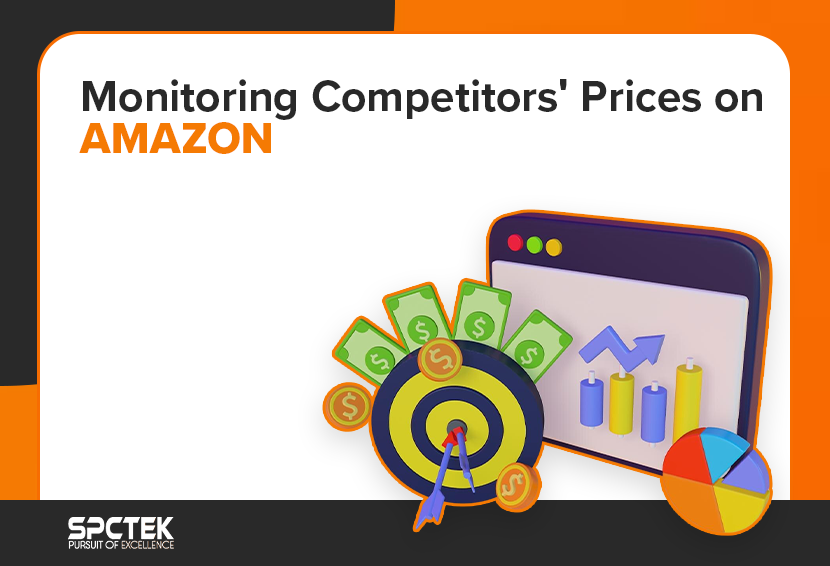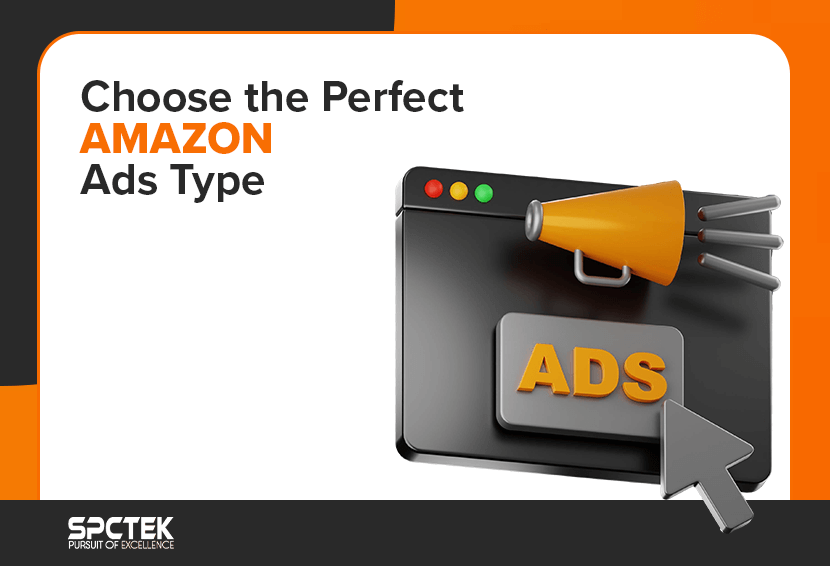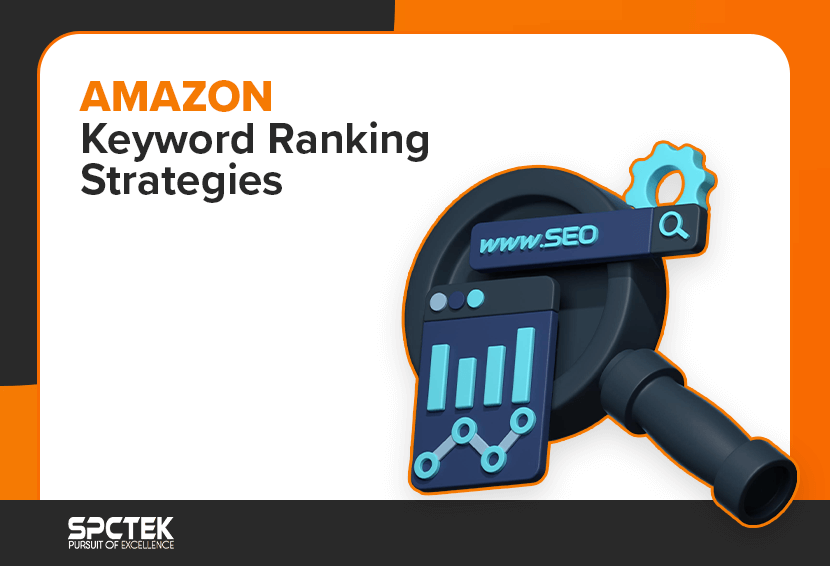Monitoring your competitors’ prices on Amazon will give you the necessary insights to create and improve effective pricing strategies. This will allow you to stand out from the crowd and increase conversion rates and profit margins.
In this article, you’ll learn the benefits of tracking your competitors’ prices and 3 price-monitoring strategies you can implement today. Let’s get started!
What is Price Monitoring?
Price monitoring is the regular tracking and analysis of the prices of similar products or services sold by other businesses in the same industry or market. It can be done manually or automated through the use of price-tracking software (built in-house or by a 3rd party).
Businesses can use pricing data for many purposes. However, one of the most common uses is to develop their own pricing strategy.
In this sense, you can use price monitoring to benchmark your product prices against your competitors, find opportunities to improve your listings, or rethink your price structure to stay competitive.
Another common use case for mid to large companies is enabling dynamic pricing. This technique allows you to automatically change your product prices based on several factors like product demand, seasonality, and, of course, fluctuations in your competitors’ prices.
Benefits of Monitoring Your Competitors’ Prices on Amazon
Here are the key benefits of monitoring your competitors’ prices on Amazon:
- Optimize Pricing Strategy: Monitoring your competitors’ prices helps you adjust your pricing strategy to stay competitive, increasing your chances of winning the Buy Box and boosting sales.
- Increase Profit Margins: By tracking price changes, you can identify opportunities to raise your prices without losing sales, leading to higher profit margins and improved business performance.
- Improve Market Positioning: Price monitoring helps you understand how your products are positioned relative to competitors, enabling you to adjust your pricing and marketing strategies to gain a competitive edge.
- Enhance Business Agility: Regular price monitoring enables you to respond quickly to market changes, helping you stay ahead of the competition and adapt to shifting market conditions.
Of course, collecting Amazon price data isn’t the only way to get these insights, as your competitors are also selling on other platforms, or even their own websites.
However, the importance of monitoring your competitors’ prices on Amazon is due to consumer behavior. In fact, 66% of consumers start their product search on Amazon.
In other words, even if you’re trying to increase sales outside of Amazon, you’re still competing with products listed on the platform.
With that in mind, let’s explore the main three options to start collecting price data.
3 Approaches to Price Monitoring
1. Track Prices with Low-Code Tools
Low-code tools are an excellent option if you want to take a hands-on approach to price monitoring without building a full-on in-house tool from scratch.
To show you how simple this could be, let’s walk you through setting up a project with ScraperAPI’s automated scraping tool, DataPipeline.
1. Sign up for a DataPipeline account and create a new DataPipeline project

2. Next, choose the Amazon Product template, which will return product details from any Amazon product page

3. Select the Amazon products you want to track by inputting the product ASINs and following DataPipeline’s instructions

4. Set up an output format and a schedule for data collection (e.g., daily, weekly, monthly) – if you don’t have coding experience, we recommend choosing CSV as an output

5. Review and analyze your collected data on your project’s dashboard

After every successful run, you’ll receive an email with your desired data.
2. Use Off-the-Shelf Software
Various software and services can help you monitor pricing data without requiring extensive setup or coding knowledge. Here are three recommendations:

PriceZombie is a price monitoring tool that tracks prices on Amazon and other ecommerce platforms. It provides real-time price updates, price history, and alerts for price changes.

CamelCamelCamel is a price tracking tool that monitors prices on Amazon and provides price history charts, price drop alerts, and sales rank tracking.

Keepa is a price tracking tool that monitors prices on Amazon and provides price history charts, price drop alerts, and sales rank tracking. It also offers a Chrome extension for easy access.
These software and services can help you monitor pricing data out-of-the-box. However, keep in mind that your competitors can also access the same data you are, so it might provide less unique data than collecting it yourself.
3. Build a Web Scraper
Web scraping is a technique used to extract data from websites, and it can be a powerful tool for monitoring competitors’ prices on Amazon.
Here’s a high-level overview of how web scraping works and what the process would look like:
How Web Scraping Works
In simple terms:
- A web scraper sends an HTTP request to a website (in this case, Amazon) to retrieve the HTML content of a product page.
- The web scraper then parses the HTML content to extract the relevant pricing data (e.g., the current price, price history, and sales rank).
- The extracted data is then stored in a database or file (JSON or CSV) for further analysis and use.
Scraping Amazon Prices (Process)
Here’s a high-level overview of how you can scrape Amazon price data:
- Identify the Amazon product pages you want to monitor and extract the relevant pricing data.
- Use a web scraping tool (such as BeautifulSoup or Scrapy) to send HTTP requests to the product pages and extract the HTML content.
- Parse the HTML content to extract the pricing data using a programming language like Python or JavaScript.
- Store the extracted data in a database or file for further analysis and use.
Recommended tools
There are many tools you can use to collect web data, but here are the most popular ones:
- Web scraping frameworks and libraries like BeautifulSoup, Scrapy, or Selenium
- Programming languages like Python, JavaScript, or Ruby
- Database management systems like MySQL, MongoDB, or PostgreSQL
- Web scraping solutions like ScraperAPI to handle rotating proxies, user agents, and CAPTCHA solving, preventing your scrapers from getting blocked
Note: If you’re new to web scraping, check this guide on how to perform an Amazon competitive analysis. You’ll learn how to collect Amazon product data and how to use Excel to extract insights from it.
Wrapping Up
When choosing the right approach for your use case, consider the following points:
- Low-code tools like DataPipeline are ideal for hands-on monitoring for teams without developers
- Done-for-you software and services like PriceZombie, CamelCamelCamel, and Keepa offer easy-to-use interfaces and real-time data in exchange of flexibility and scalability
- Building a web scraper requires technical expertise but provides flexibility and higher scalability than off-the-shelf software
To choose the right approach, you’ll need to first take a look at your internal resources and data needs. Ask yourself – and your team:
- Do we have the technical expertise to build scrapers on your own?
- Does an off-the-shelf software offer the data we need?
- How often do we need to monitor these prices?
- How many web sources do we need to monitor?
By the end of this exercise, you’ll have a clear path to make a decision.
Got More Questions?
You can use low-code tools like DataPipeline, off-the-shelf software such as PriceZombie and CamelCamelCamel, or build a custom web scraper to collect and analyze pricing data effectively.
Monitoring competitors’ prices helps optimize your pricing strategy, increase profit margins, improve market positioning, and enhance business agility to respond quickly to market changes.
Amazon is a significant marketplace where a large portion of consumers begin their product searches, making it crucial to understand and react to pricing trends to remain competitive and attract customers effectively.






